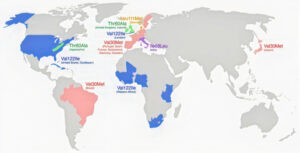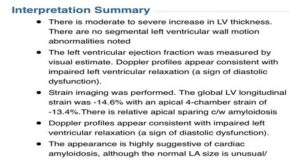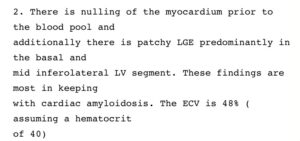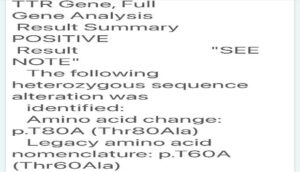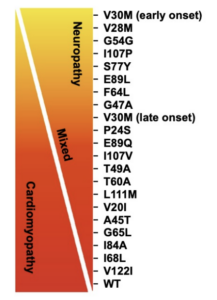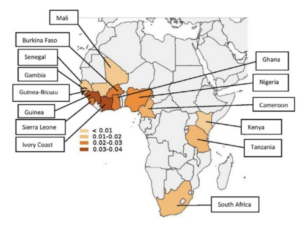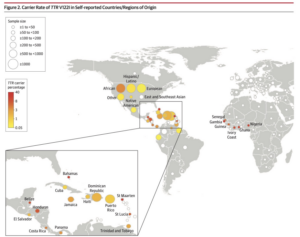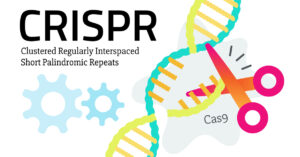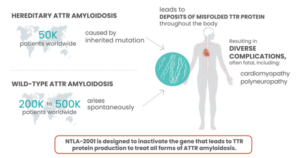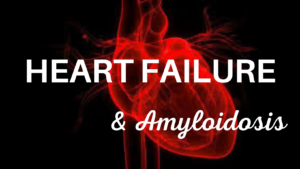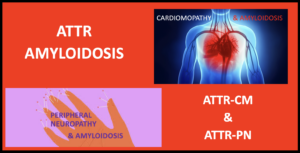

Our mission is to educate future doctors about amyloidosis, with the belief that heightened awareness will lead to earlier diagnosis and ultimately improve patient survivorship. We know that the level of medical school education about amyloidosis runs the gamut, from a small mention in textbooks to classroom discussions with medical professionals, although the bias is overwhelmingly towards the “minor mention.” In addition, you’ll read below about our exciting expansion into residency programs – those new physicians now practicing and diagnosing patients. As a result, we are confident our efforts will provide a valuable enriched exposure to this disease to augment the medical school curriculum and residency didactic programs.
EXECUTIVE SUMMARY
- Last year, we set our 2021 goal at 60 presentations, with hopes that the year would emerge from the 2020 pandemic onset. For the most part, it did. We gave 34 presentations in the Spring, and 27 presentations this Fall. Combined, these 61 presentations were to more than 2,400 medical students and physicians! Go us!
- Of the 61 presentations, 59 were virtual and 2 were in-person. Of note, both of the in-person were to our newly launched residency program outreach. Schools, with students returning to in-person in the Fall, remained largely closed to guests. Looking ahead we anticipate seeing a few more in-person, but virtual is likely here to remain in a big way for the foreseeable future.
- Our recent expansion into internal medicine residency programs (over 550 of them across the U.S.) has already resulted in 6 presentations on the calendar for 2021 and 2022. Our custom video specifically focused for this audience has been very well received and provides an excellent clinical educational complement to our patient stories.
- We average around 35-40 speakers, which allows for diversity in our speaker population’s disease state and flexibility in their availability. This has served us well. (more on that below)
- We are particularly delighted that our medical school student mailing list – those interested post-presentation in continuing to receive information about amyloidosis – continues to grow and is now around 350! Each month we email brief information about some aspect of amyloidosis, with the content pulled from experts and other trusted organizations. Our goal is to keep amyloidosis in their mind as they approach graduation and begin seeing patients.
- In October we held our first webinar, “Discover the Power of the Patient/Physician Collaboration” with guests Dr. Rodney Falk and hereditary ATTR patient Sean Riley. We ourselves were very pleased with the discussion and insights, although the attendance fell short of expectations for medical student turnout.
- With the help of one of our speakers Dr. Kathy Rowan, a professor in social science, we received approval from George Mason University’s IRB (Institutional Review Board) in August and launched a study to understand the impact and effectiveness of our educational offering to medical students. At present, we are in data collection mode and anticipate in 2022 we will transition to analysis of the data. If the conclusions are insightful, we intend to seek publication.
- Each Spring and Fall we reach out to medical school deans, updating them on our activities.
THE NUMBERS
- Our target universe is approximately 160 continental U.S.-based medical schools – both their curriculums and student interest groups, and over 580 internal medicine residency programs.
- We gave 61 presentations in 2021, and have 13 already booked for 2022.
- Since the ASB started in the Fall of 2019, we now total 153 presentations, to approximately 6,900 students and physicians. A complete list of schools and resident programs can be found below.
- Of the 2021 presentations, roughly 20% of the presentations were within the curriculum; 75% to student interest groups, and 5% to residency programs.
SPEAKERS
The cornerstone of our effort is our group of wonderful patient speakers, who passionately volunteer their time to give back and share their stories of life with amyloidosis.
Our speaker group is diversified by geography across the continental U.S., by amyloidosis type, by organ involvement, by gender and age. This is a rather deep bench, but we have found it both helpful and necessary. Helpful in that we can maximize attendance if we work around the preferred dates and times suggested by the schools. Helpful in that we can match specific disease states with audience focus (e.g., a cardiac amyloidosis patient speaker to a cardiology student interest group). Also, helpful in rotating speakers and types of disease at each school, since we are regularly returning to groups which have overlapping students. And necessary in that periodically, a speaker’s personal situation may change and they need to step back either temporarily, or permanently. We are delighted that our group is fairly stable and increasingly seasoned and experienced in sharing their stories. That said, we are fortunate to have a steady pipeline of new speaker interest, which we spend time screening, qualifying and training to bring online – only if needed (so it’s rare we add new speakers these days). At present, we feel this is an appropriate number of speakers for our current and anticipated growth.
Thanks to two of our speakers who have extensive experience, we offer in-depth guidance for new speakers, and current speakers wanting a ‘refresh’ in the development of their presentation outline and rehearsal training for their delivery. In addition, prior to most virtual presentations we rehearse and test the new speakers’ audio and video technology. For those partaking, it has been an appreciated additional level of support and we believe is translating to a higher quality offering.
ADVISORS
We are proud to have an impressive group of medical experts and influencers in the world of amyloidosis, some of whom are also patients, as advisors to support our initiative. Our advisors are active in our efforts and contribute their specialized expertise in a variety of ways, such as medical school introductions, grant requests, educational development, and patient speaker assessment/development. We are extremely grateful for their assistance and believe that, thanks to their contribution, the ASB will make an even bigger difference in the diagnoses of this disease. You can see our prestigious list of advisors on our website page www.mm713.org/speakers-bureau/
TESTIMONIALS – OUR TRUE REPORT CARD
Feedback from students and medical school professors has been extraordinarily positive. It reinforces to us that candid and authentic patient stories are a valuable complement to the medical school curriculum, strengthening the learning and deepening the durability for these future doctors about this disease. This is exactly why we do what we do. Here are just a few of the testimonials.
The opportunity for second year medical students to hear the story of a patient with amyloid is invaluable. The presentation addressed aspects of pathophysiology they are learning and the human side of medicine. This presentation format offered an excellent teaching opportunity to inform doctors-in-training about this serious disease. Our students gained insight into the patient’s journey through diagnosis, treatment and the challenges ahead. We all appreciated the patient’s generosity in sharing her experiences. Having patients teaching medical students about amyloidosis will have a lasting impact on our future doctors with increasing awareness of this disease and ultimately will help future patients. Theresa Kristopaitis, M.D., Professor, Assistant Dean for Curriculum Integration, Loyola University Stritch School of Medicine
Such a powerful presentation that I will carry with me throughout my whole career, no matter what specialty I go into! I not only learned the importance of keeping amyloidosis on my differential, but also the importance of really listening to your patients and working through the hard diagnoses together. Solana Archuleta, MD Candidate, University of Colorado School of Medicine
I had several students make comments after the conclusion of the presentation that it was the best, one even said ‘exceptional,’ presentations given at our school from a patient. The materials gave all of the students, including myself, a great introduction to some of the pertinent findings in patients with amyloidosis. Co-President of the Internal Medicine Interest Group, University of Arizona College of Medicine, Phoenix
Hearing Ed talking about his journey with Amyloidosis was an incredible experience that only further inspired me to want to be a better physician for my future patients. It is one thing to learn about a condition in the classroom, but hearing the real-world struggles with it from another human being provides a whole new perspective. Ed was open about his journey and shared his feelings during each step, giving us insight into what it is like to be a patient with Amyloidosis. I will take what I learned from this presentation and apply it in order to ensure that patients I see in the future do not have to deal with the same issues that Ed had to deal with. Gurkaran Singh, MD Candidate, University of Arizona College of Medicine, Tucson
Diseases such as amyloidosis are often managed by specialists, but it is important for primary care physicians to recognize these signs and direct these patients to these specialists. Increasing awareness of these diseases among all physicians will help patients reach an answer sooner and can have a significant impact on their lives. Yue Zhang, MD Candidate, Northwestern Feinberg School of Medicine
We are saddened that we lost our co-founder Charolotte Raymond earlier this year, losing her battle with AL amyloidosis. Charolotte was our true inspiration for the Amyloidosis Speakers Bureau, and we know her passion for educating future physicians will be our guiding light. To keep our patient-led focus, we were thrilled to have one of our speakers, Lane Abernathy, join our Operating Committee. Lane, an amyloidosis patient herself, brings wonderful energy, experience and passion to help manage our efforts. We feel thankful to have her with us.
An additional word about our growing list of passionate volunteers, the majority of whom are active speakers. They help our efforts across many aspects of our operations, from management, to speaker development, to research, and video production. Their dedication to our effort is a testament of their belief in what we are doing to educate areas of the medical community, and we thank them all.
We are pleased with all we have accomplished thus far, energized by the feedback, cognizant that we have much ahead, and hope we have made you proud. After all, we can’t do any of this without you! As always, we welcome any comments you may have.
Stay safe, happy holidays to you and your family, and all the best for a new 2022!
Mackenzie, Lane, and Deb
Operating Committee of the Amyloidosis Speakers Bureau, sponsored by Mackenzie’s Mission
Our initiative is being well received by medical schools across the country. Below is a list of schools we have presented to at least once a year, whether through their curriculum or interest groups. After that, is the growing list of internal medicine residency programs where we also have presented.
MEDICAL / D.O. SCHOOLS
- Albert Einstein College of Medicine
- Baylor College of Medicine
- California University of Science & Medicine, School of Medicine, San Bernardino
- Case Western Reserve School of Medicine
- Central Michigan University College of Medicine
- Chicago Medical School, Rosalind Franklin University of Medicine and Science
- Cleveland Clinic Lerner College of Medicine
- Columbia University Vagelos College of Physicians and Surgeons
- Drexel University College of Medicine
- Florida Atlantic University Charles E. Schmidt College of Medicine
- Florida International University Herbert Wertheim School of Medicine
- Florida State University College of Medicine
- Geisinger Commonwealth School of Medicine
- George Washington School of Medicine
- Icahn School of Medicine at Mount Sinai
- Lake Erie College of Osteopathic Medicine
- Lewis Katz School of Medicine at Temple University
- Loyola University Chicago Stritch School of Medicine
- Mayo Clinic Alix School of Medicine, Rochester
- Mayo Clinic Alix School of Medicine, Scottsdale
- Northeast Ohio Medical University College of Medicine
- Northwestern University Feinberg School of Medicine
- NYU Grossman School of Medicine
- Oakland University William Beaumont School of Medicine
- Quinnipiac University Frank H Netter MD School of Medicine
- Stanford University School of Medicine
- Touro College of Osteopathic Medicine in New York City
- Tufts University School of Medicine
- University of Arizona College of Medicine, Phoenix
- University of Arizona College of Medicine, Tucson
- University of California Irvine School of Medicine
- University of California San Francisco School of Medicine
- University of Central Florida College of Medicine
- University of Chicago Pritzker School of Medicine
- University of Cincinnati College of Medicine
- University of Colorado School of Medicine
- University of Connecticut School of Medicine
- University of Florida College of Medicine
- University of Hawaii, John A. Burns School of Medicine
- University of Illinois College of Medicine, Chicago
- University of Illinois College of Medicine, Peoria
- University of Illinois College of Medicine, Rockford
- University of Iowa Carver College of Medicine
- University of Kansas School of Medicine, Wichita
- University of Maryland School of Medicine
- University of Massachusetts Medical School
- University of Minnesota Medical School
- University of Missouri Kansas City School of Medicine
- University of Nevada Reno, School of Medicine
- University of Pittsburgh School of Medicine
- University of South Alabama College of Medicine
- University of South Carolina School of Medicine, Columbia
- University of Toledo College of Medicine
- UNLV School of Medicine
- Virginia Commonwealth University School of Medicine
- Wayne State University School of Medicine
- Wright State University Boonshoft School of Medicine
- Yale School of Medicine
RESIDENCY PROGRAMS
- Central Maine Medical Center
- Meharry Medical College Program
- Michigan State University Program, Sparrow Hospital
- St. Francis Medical Center Program, Jersey Shore University Medical Center
- Texas Institute for Graduate Medical Education and Research (TIGMER) Laredo Internal Medicine Residency Program
- Western Michigan University Homer Stryker M.D. School of Medicine
